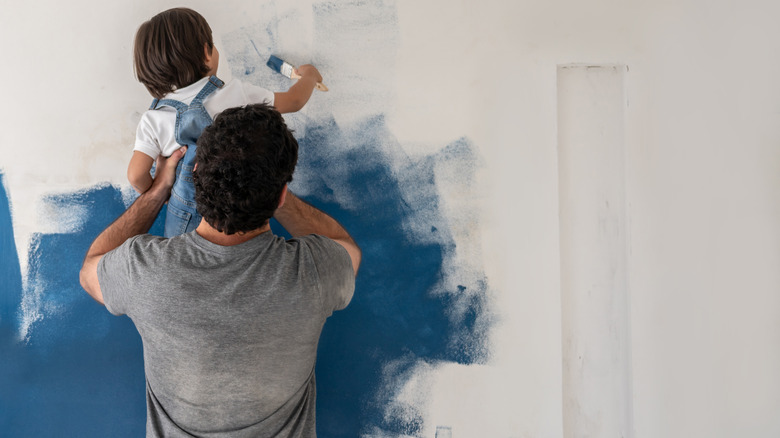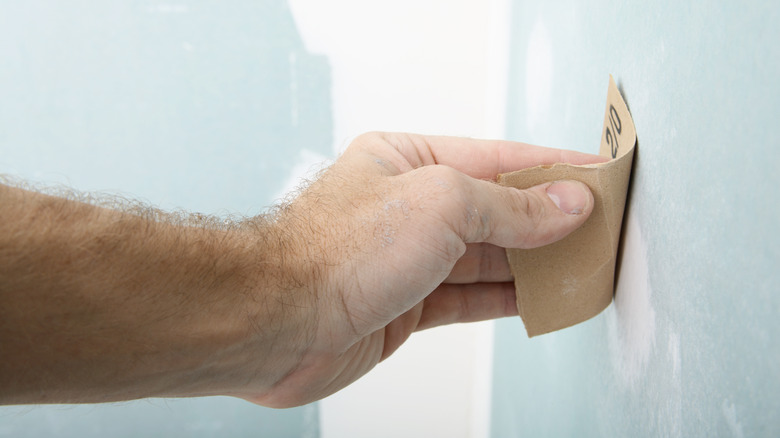What To Do When Your Freshly Painted Wall Is Showing Brushstrokes
So many of us are fond of tackling inexpensive home improvement DIY projects these days, and painting is one of the most common tasks homeowners take on. Finding the right color is an art of its own, but once you have that, it's all about putting your painting skills to the test. Even if you don't have much experience, painting is something people are generally encouraged to try. So what do you do when you finally finish a wall, only to take a step back and notice that the brushstrokes or roller marks are visible? While this may be a cause for concern at first, this issue can actually be easily fixed with a little sandpaper and some additional paint.
First of all, it's helpful to know how these types of marks occur. Most commonly, they're caused by starting a second coat before the first coat has completely dried. Using the wrong size roller cover or type of brush can similarly cause unsightly marks to appear. They can also be caused by adding paint too quickly with varying pressure or from going over the same spot too many times. Not using enough paint, choosing a cheap paint, applying too thin of a coat, or covering a hot or porous surface could also be the culprit. In any case, do not despair, as it's a common mistake that can easily be fixed.
How to deal with brushstrokes or roller marks after painting
The first thing to do is wait patiently for the paint to totally dry before starting the repair. Then, find the trouble spots and lightly sand the paint down with some 150-grit sandpaper. Get a damp sponge or cloth and wipe down the area afterwards to remove any dust. Be sure the area is nice and smooth. Next, once the wall has dried, get your paint and paintbrush or roller out and make sure you're not going to have any interruptions. You need to repaint the area thoroughly and in one sitting so that you maintain what's commonly called a "wet edge." This means that you don't want the paint to dry until the job is done, like it can if you take a break to talk on the phone or eat lunch.
Some people fix this kind of problem by waiting until the paint is completely dry and applying a second or even a third coat without sanding. As long as the marks aren't too raised in the paint this can work, but you'll get much better results by smoothing them out first. Additionally, make sure you take steps to keep these kinds of marks to a minimum by following a few simple tips.
How to prevent brushstrokes and roller marks in the future
In order to avoid brushstrokes in the future, make sure you have a good quality brush and you're using quality paint. Take small sections at a time, and try painting strokes with a brush horizontally. Go slow and steady with each stroke, and make sure your brush always has enough paint. Another tip is to add just a little water or linseed oil to thin and smooth out the consistency of the paint.
Use a roller wherever possible, and to avoid lap marks, make sure you maintain a "wet edge" and choose the right size roller cover. A bigger area needs a bigger roller and cover, and certain covers are often designed for a certain type of paint. Further, try and make sure you use the same amount of pressure as you go, and when you start to see gaps, it's time for more paint. Finally, cover an entire wall at the same time without taking too long of breaks. If you're painting a surface that's in the sun, wait until it's not too hot. Remember, it takes practice but you'll get better over time, and mistakes like these can be fixed easily enough.


